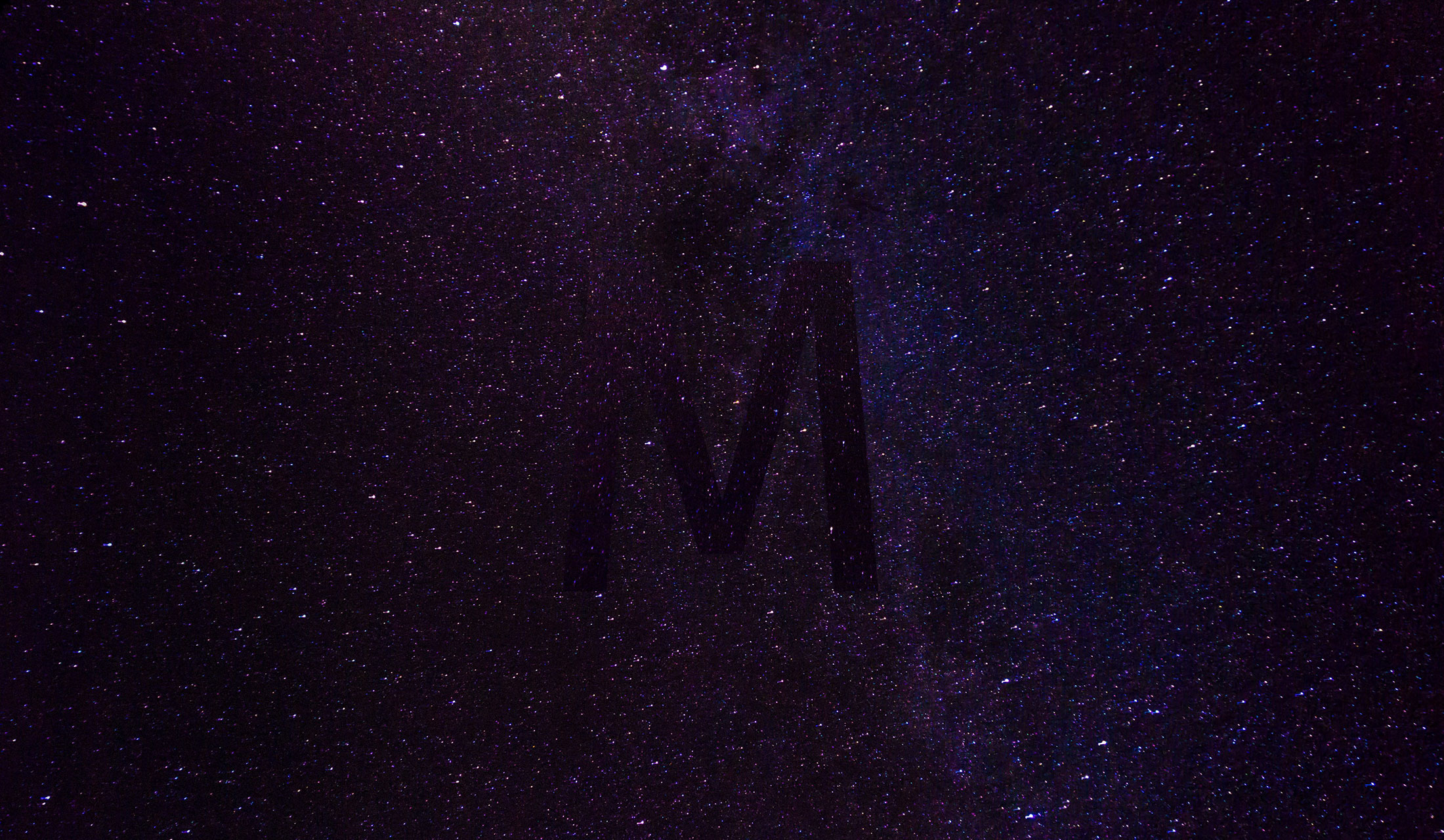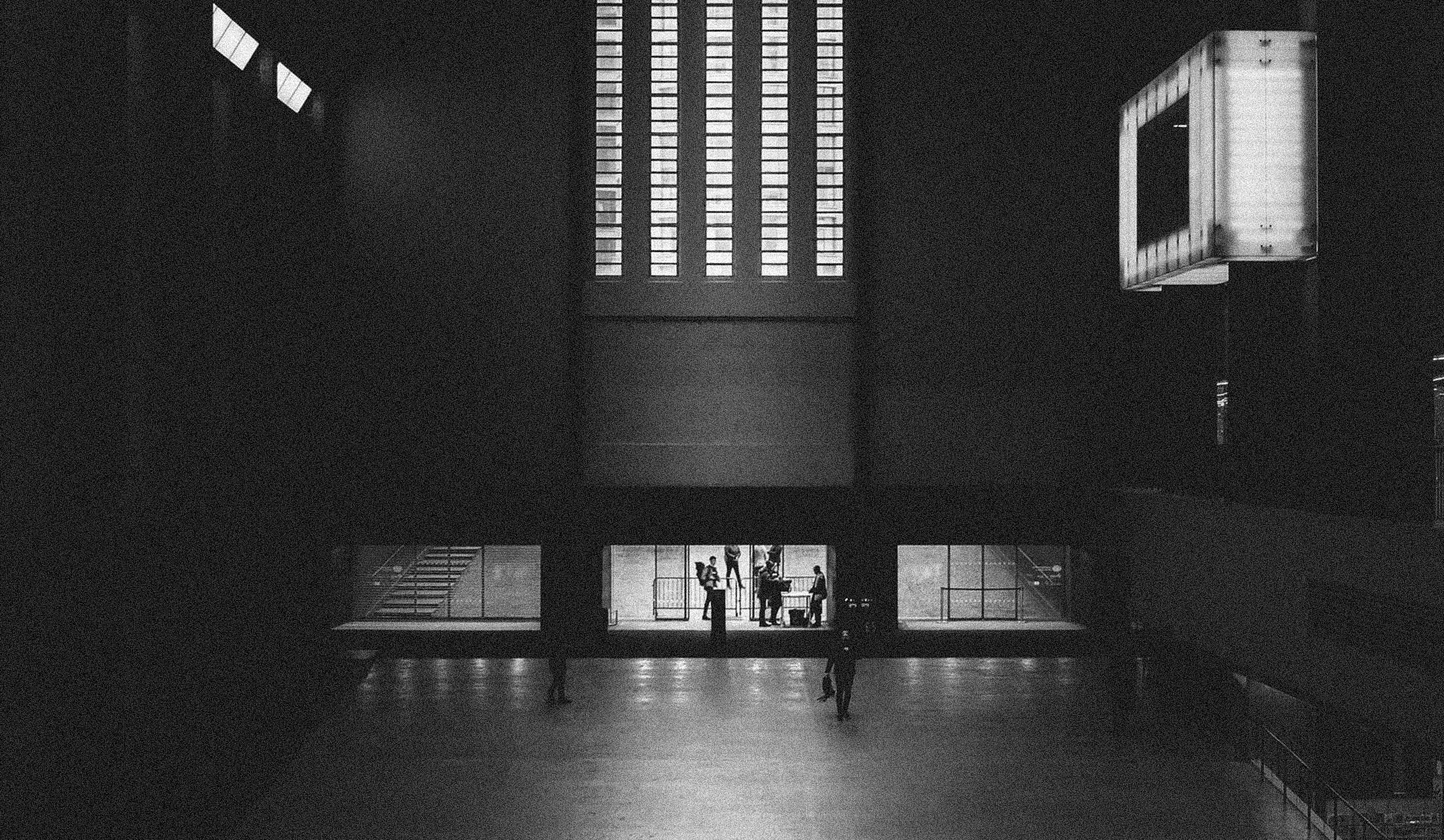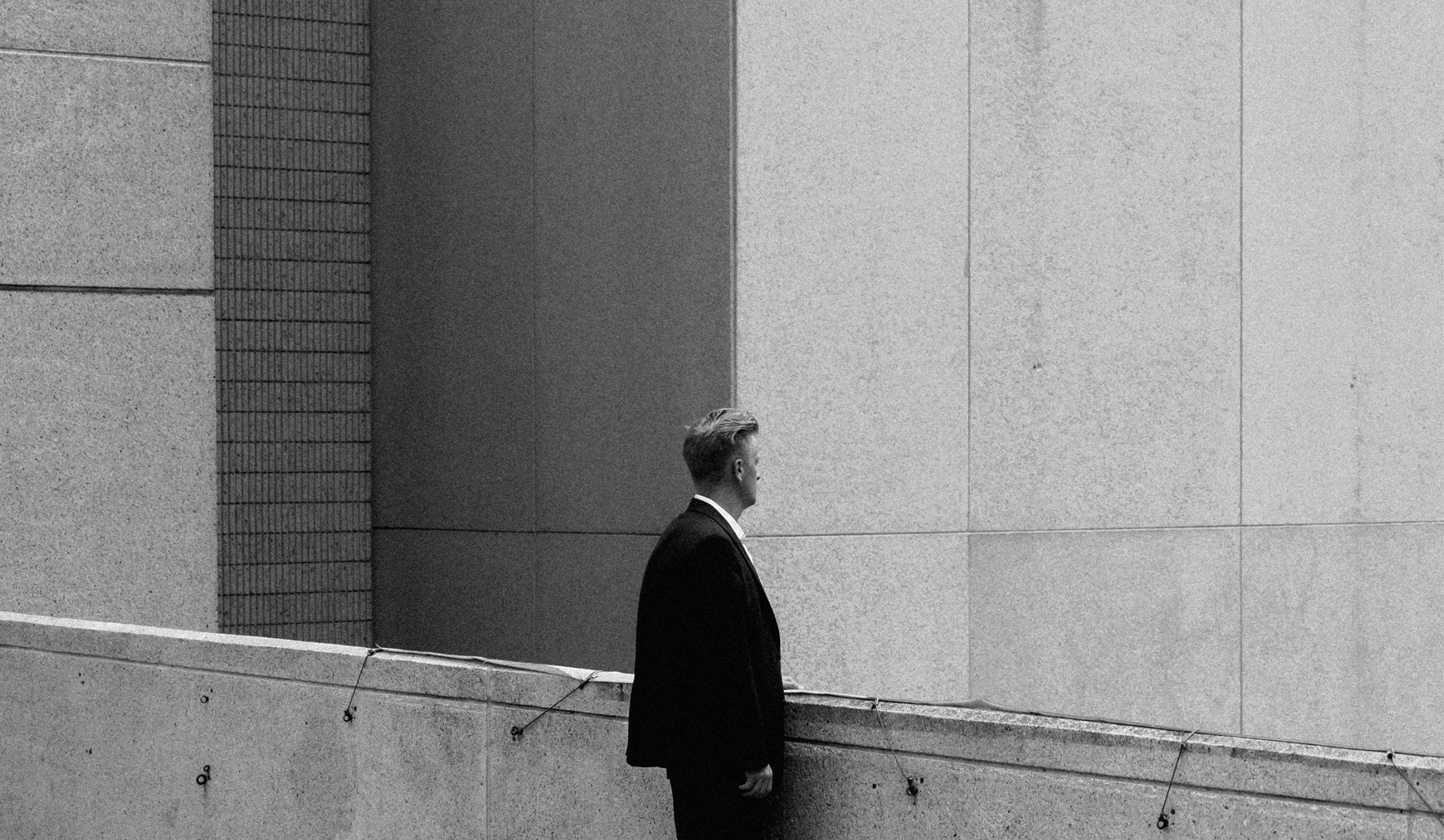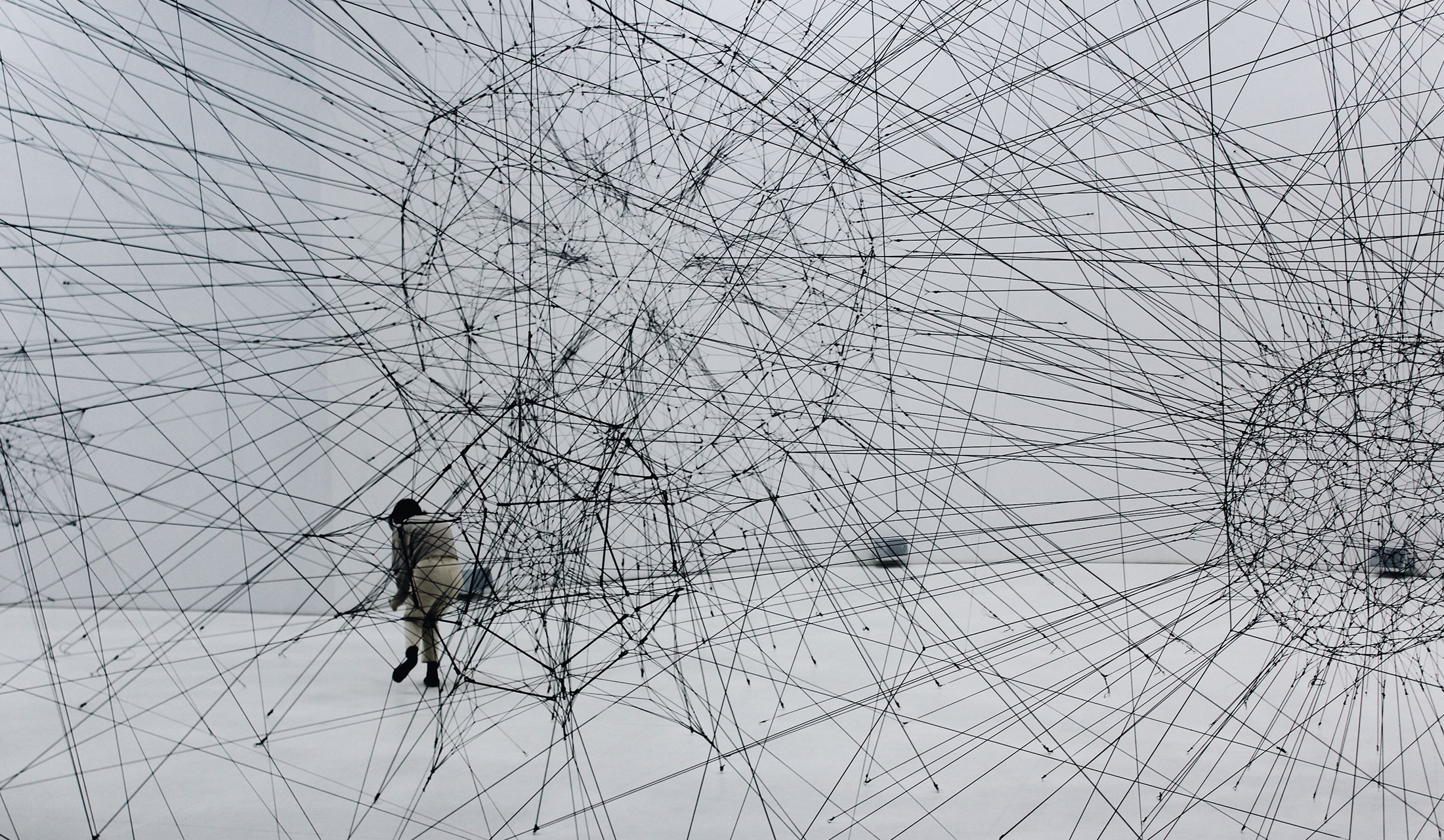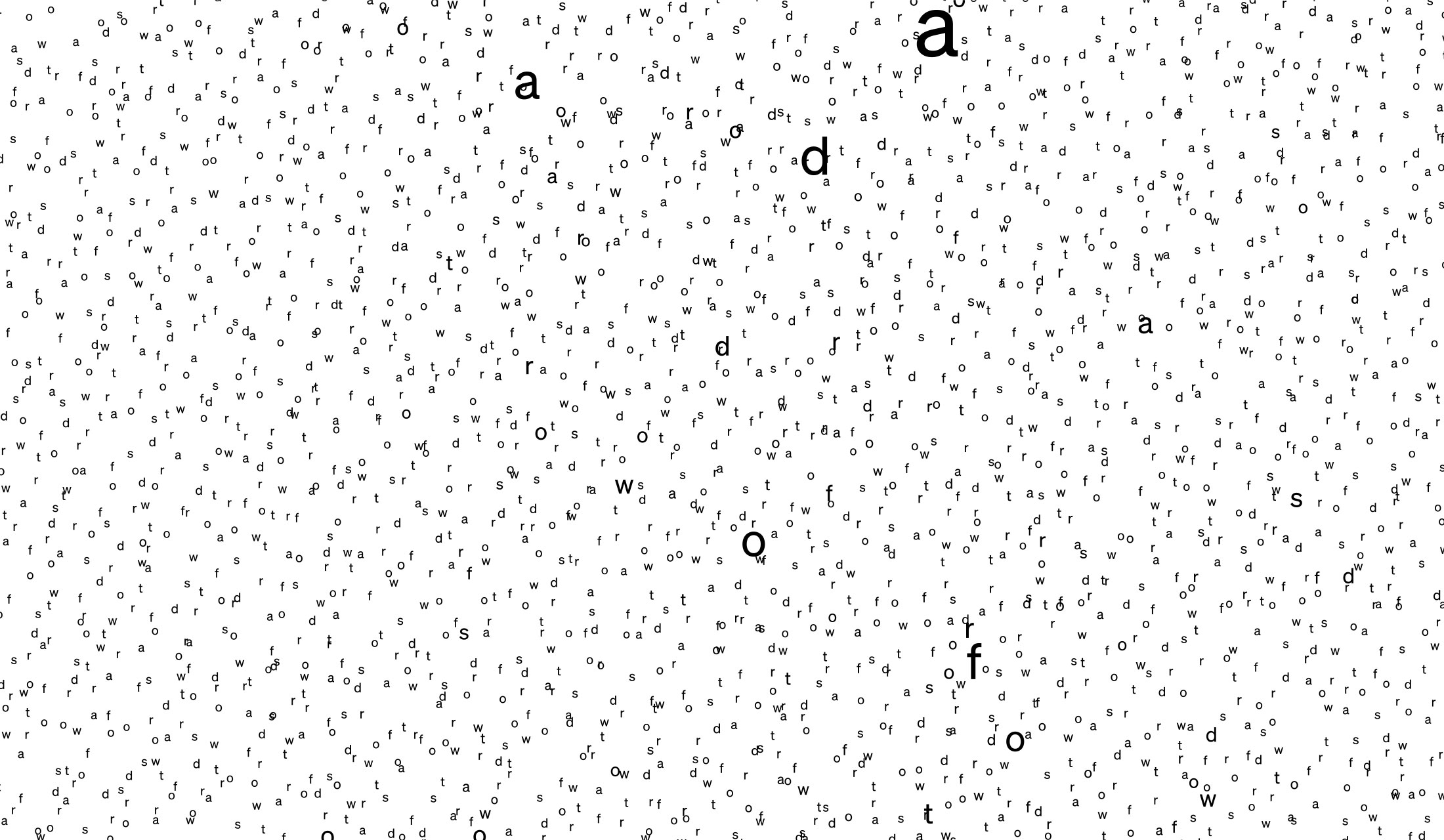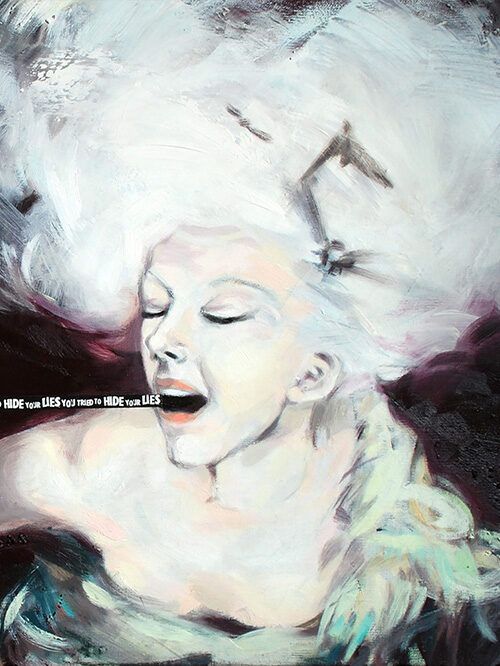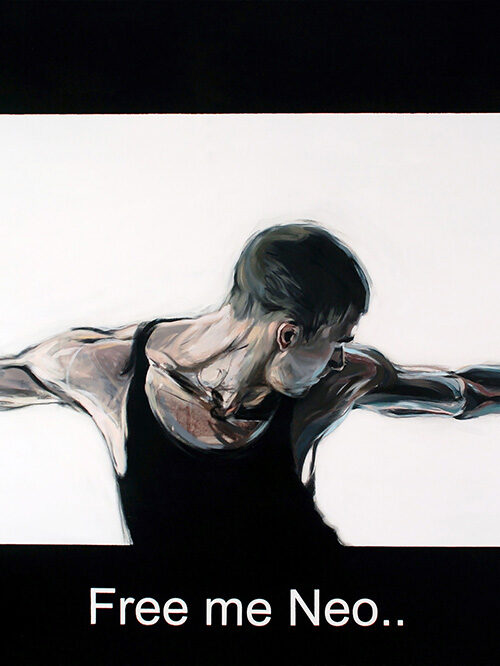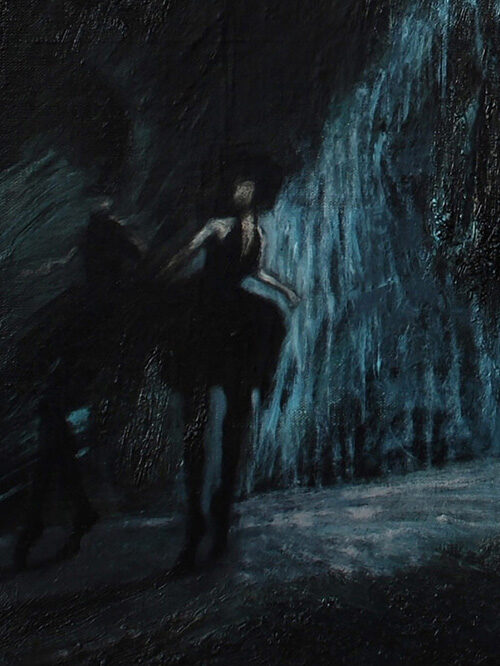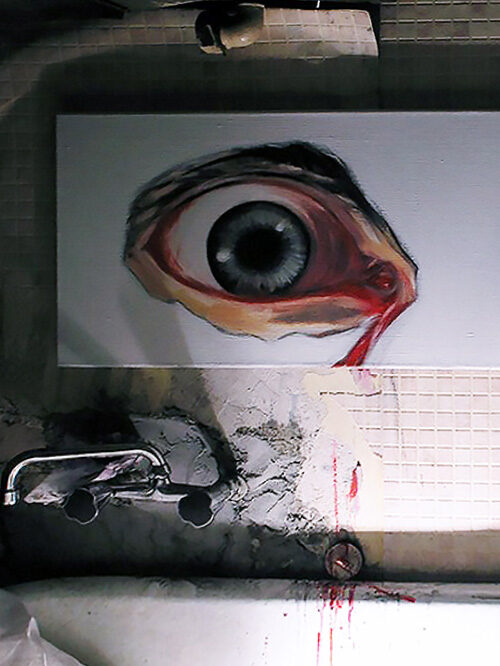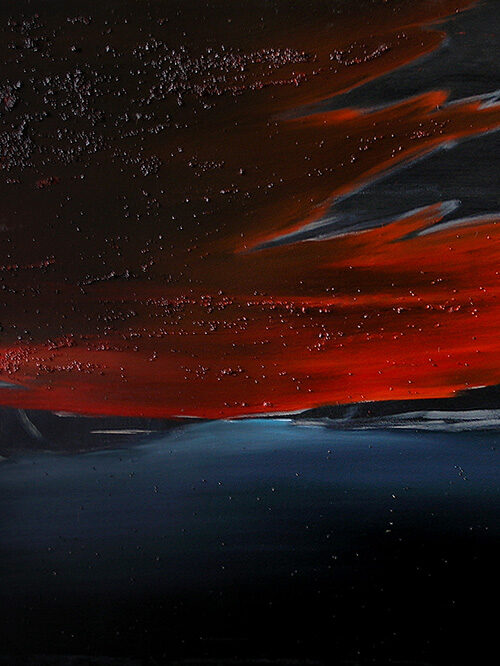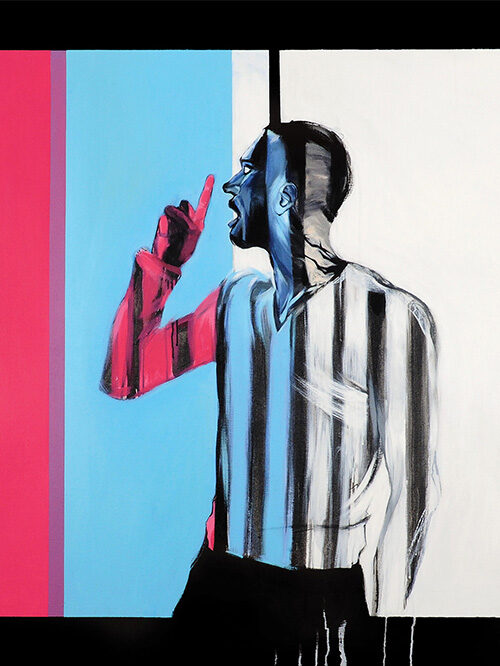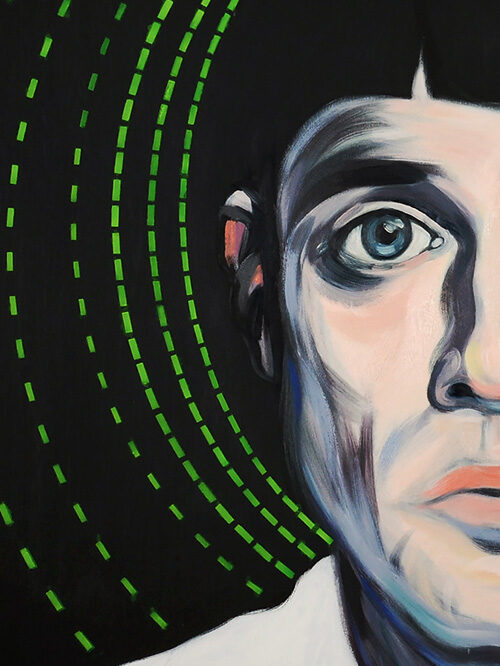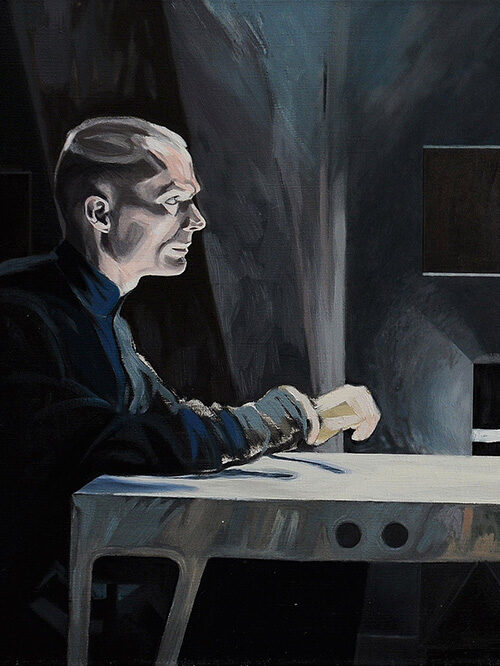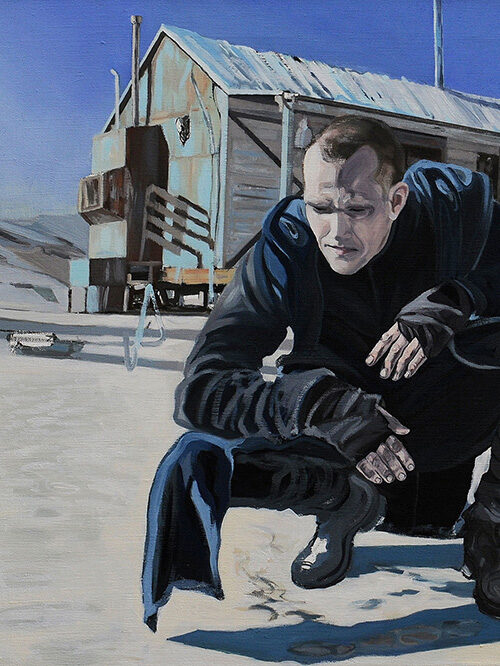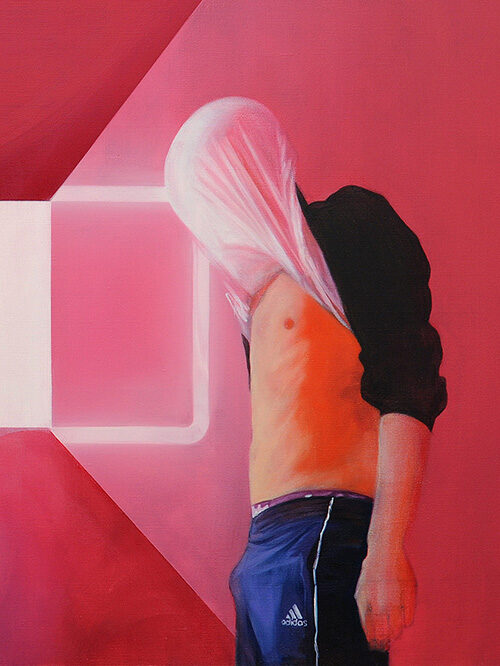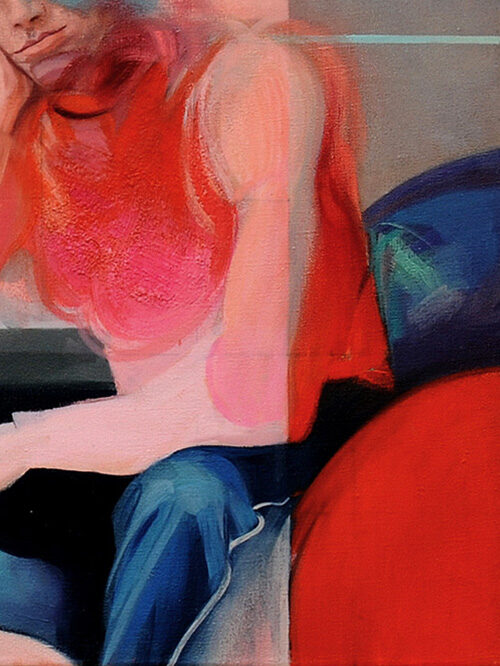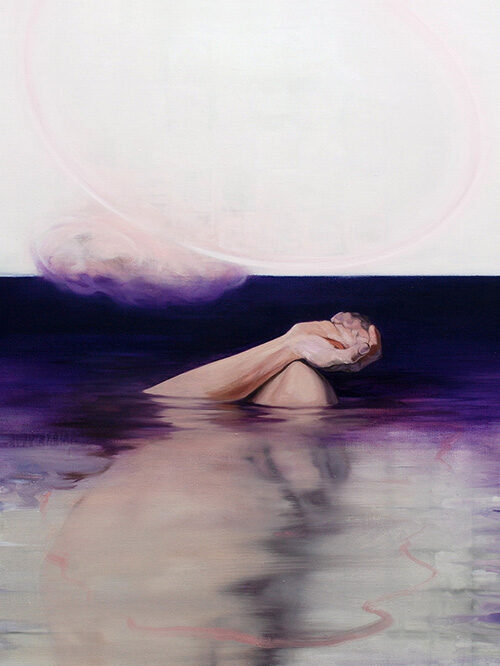

A Short Story
100 x 60 cm / 100 x 60 cm, oil on canvas, 2013 / 2014
“A Short Story” features two paintings with separate titles: “We leave at dawn” and “East, always into the East”. The works were inspired by scenes from Scott Stewart’s film “Priest”. The titles are an integral part of the pictures.
“We leave at dawn” (2013)
The painting entitled “We leave at dawn” depicts two men in a dim room. The older of the two is seated on the left side of the table. To the right, stands the younger man, who is leaning with his hands on the table and gazing with determination in his eyes at his companion. He seems to be saying to him: “We leave at dawn”. The other is watching him in concentration. Their faces are illuminated by the light of a lamp on the table. It adds to the drama of the scene. A faint light shines through from a small window in the wall.
The background is treated in a simplified manner, with the geometry of the objects highlighted. The colour scheme is narrowed down to shades of blue and grey with accents of brown and pink. The figures are painted with dynamic, thick brushstrokes. The vivid line of the drawing is fundamental to the construction of the form.
“East, always into the East” (2014)
The painting, entitled “East, always into the East”, depicts two men in a desert landscape. The older of the two, balding and dressed in dark robes, kneels in the foreground looking for a trail. The other is waiting for him in the far background. The scene takes place in front of an old wooden hut in a wasteland where the men have taken shelter for the night. They are travelling east, always into the east.
The painting is a combination of finely worked elements with simplified surfaces of colour, as in the sand or sky. Even the shadows surrender to geometry. The colour scheme is narrowed down to blues, warm greys, pastel yellows with accents of browns and pink. The main figure is painted with dynamic, thick brushstrokes. The vivid line of the drawing is fundamental to the construction of the form.
“We leave at dawn” (2013)
The painting entitled “We leave at dawn” depicts two men in a dim room. The older of the two is seated on the left side of the table. To the right, stands the younger man, who is leaning with his hands on the table and gazing with determination in his eyes at his companion. He seems to be saying to him: “We leave at dawn”. The other is watching him in concentration. Their faces are illuminated by the light of a lamp on the table. It adds to the drama of the scene. A faint light shines through from a small window in the wall.
The background is treated in a simplified manner, with the geometry of the objects highlighted. The colour scheme is narrowed down to shades of blue and grey with accents of brown and pink. The figures are painted with dynamic, thick brushstrokes. The vivid line of the drawing is fundamental to the construction of the form.
“East, always into the East” (2014)
The painting, entitled “East, always into the East”, depicts two men in a desert landscape. The older of the two, balding and dressed in dark robes, kneels in the foreground looking for a trail. The other is waiting for him in the far background. The scene takes place in front of an old wooden hut in a wasteland where the men have taken shelter for the night. They are travelling east, always into the east.
The painting is a combination of finely worked elements with simplified surfaces of colour, as in the sand or sky. Even the shadows surrender to geometry. The colour scheme is narrowed down to blues, warm greys, pastel yellows with accents of browns and pink. The main figure is painted with dynamic, thick brushstrokes. The vivid line of the drawing is fundamental to the construction of the form.
Articles
Inner speech and tacit knowledge
Probably each of us has talked to oneself, if not aloud, then at least in thoughts. Man is entangled in a continuous dialogue not only with other people but also with himself...
Metauniverse – the reality of music videos
We do not exist without stories. We are narrators in the world of hypertext, sometimes in the first, other times in the third person. A music video, which runs on average for...
Hierofany of pop culture Messiah
Pop culture Hierophany, or manifestations of the sacrum, is carried out in commercial spaces of modern department stores. Where each of us can find our own private messiah...
Articles
Postmodernity – Fusion of High and Low Art
“Fluids travel easily. (…) they pass around some obstacles, dissolve some others and bore or soak their way through others still”. According to Bauman, we are...
Hierofany of pop culture Messiah
Pop culture Hierophany, or manifestations of the sacrum, is carried out in commercial spaces of modern department stores. Where each of us can find our own private messiah...
Parallels between art and language
I understand art as innovation, fluid matter without clear boundaries that spills out over all walks of life and all types of human experience. I understand art as innovation...
Words of art
Art begins with void – the empty abyss of white emanating from paper or canvas. But void ends with the emergence of awareness, and thus thought – silent naming. So, the word...



